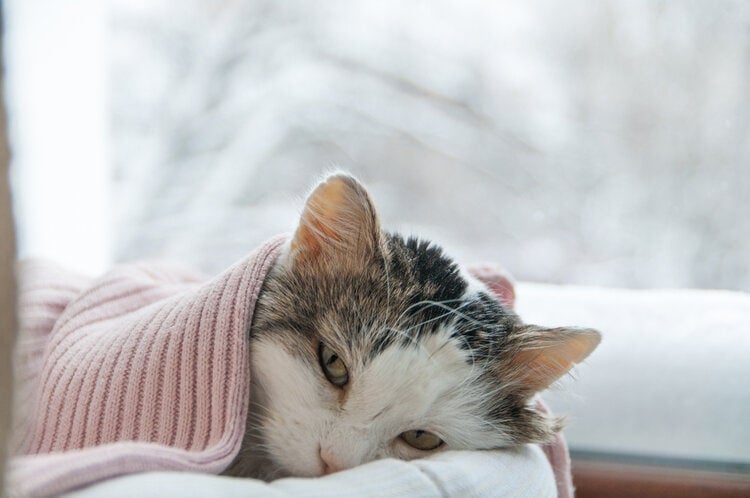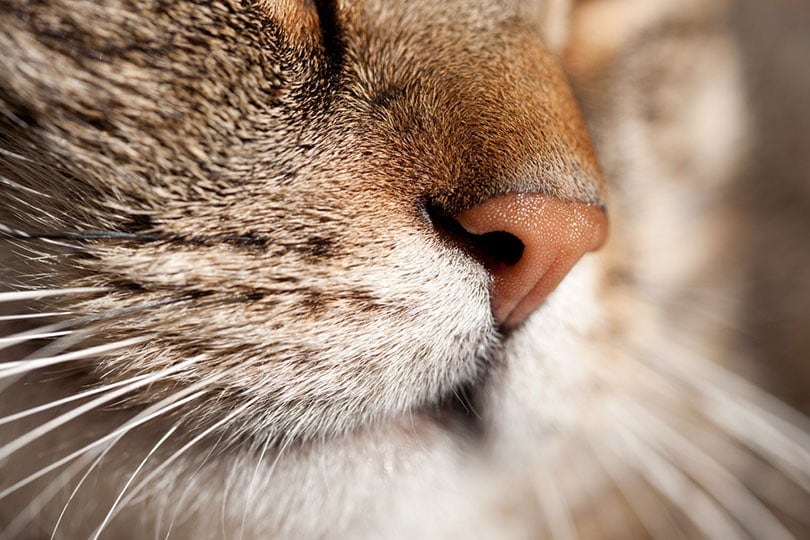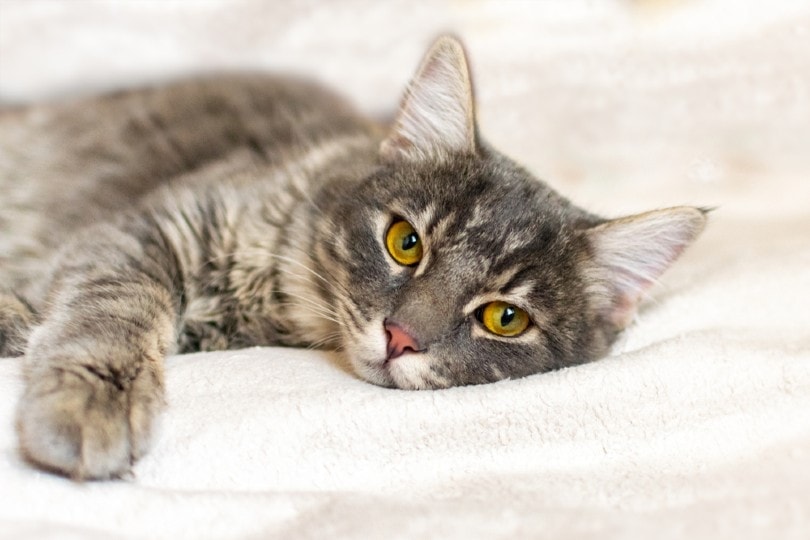3 Most Common Cat Allergies & Their Signs: Vet-Approved Facts
Updated on

All cats scratch and bite their skin. However, itching, biting, redness, hair loss, and excessive or continual licking can be signs of allergies. As with humans, allergies in cats can be caused by a wide variety of agents. The three most common allergies in cats are either the environment, flea saliva, or food. Understanding the different types of allergies in cats can help you seek prompt veterinary care and provide relief to your pet.
 What Is an Allergen?
What Is an Allergen?
An allergen is a substance or microorganism that causes an allergic reaction (e.g., dust, pollen, mold, certain foods, etc.). The allergen causes histamine to be released into the bloodstream, resulting in irritation of the airways, the skin, or the eyes, which is manifested as sneezing, incessant scratching, and runny eyes.

Do Cats Have Allergies?
Just like humans, our four-legged friends are indeed prone to allergies. As you now know, the most common allergies in cats are the environment, flea saliva, or food.
Whether environmental or dietary, allergies in cats are caused by the same factors as in humans; there is undoubtedly a genetic predisposition and environmental factors.
- 1. Flea allergies: Often, allergic reactions in cats are caused by a flea infestation, specifically by the flea saliva. Typically, affected cats have small inflammatory nodules on their backs. By licking profusely from the severe itching, secondary bacterial or fungal infections can worsen the inflammation of the skin.
- 2. Environmental allergies: Like humans, cats can develop allergies to various environmental allergens, such as pollen or dust mites. The latter usually causes allergic skin inflammation all year round, while pollen allergy usually occurs seasonally. Among environmental allergens, we also find mold spores or scents contained in some cat litter. Perfumes and household products are also potential allergens.
- 3. Food allergies: Like flea allergies, food allergies are common in cats. They can occur spontaneously and lead to itching, vomiting, and diarrhea. Beef, fish, chicken, and dairy products have become the most common allergens in recent years.
Note: Cats are not allergic to beef, per se, but can develop an allergy to what they will eat more often in large quantities. So, the more beef they eat, the more likely they are to become allergic to it.
What Are the Signs of Allergic Reactions in Cats?
Allergies are a common cause of skin problems in cats. Skin diseases (also called allergy dermatitis) occur when the immune system overreacts to a particular substance (the allergen), which leads to signs such as redness, swelling, itchiness, fever, or pain.

The most common substances responsible for skin allergies in cats are:
- Certain dietary proteins
- Fleas
- Inhaled allergens (such as pollen or dust mites)
- Contact allergens
The most common signs of allergies in cats are:
- Intense and prolonged itching that the cat experiences upon exposure to the allergenic substance
- Redness and sores on affected areas of the skin (caused mainly by constantly scratching, licking, and biting)
- Skin infections caused by bacteria (causing additional itching, pustules, and scabs to develop)
- Hair loss (alopecia)
- Gastrointestinal disorders (nausea, vomiting, diarrhea)
- Secondary bacterial infections (inflammation of the skin and other organs)
- Allergic asthma and anaphylactic shock (sudden difficulty in breathing, which can be fatal)
- Excessive licking (grooming)
- Pulling or biting out hair
- Ear infections
Diagnosis can be difficult because there are many possible causes of dermatitis. Therefore, your veterinarian will rely on your cat’s medical history, the type and frequency of itching episodes, and the elimination of other potential causes to identify the cause of the skin allergy.
Suppose the suspected cause of the skin allergy is inhaling particles (such as pollen, mites, and mold). In that case, your veterinarian performs a test by injecting a small amount of the allergen into your cat’s skin to identify the origin of the allergy.

 How to Diagnose an Allergy in Your Cat
How to Diagnose an Allergy in Your Cat
If your cat is showing signs of an allergy, you should see your vet. By a diagnosis of elimination, they will be able to evaluate where the allergy comes from and thus prevent the signs. To determine potential allergens, they will ask you questions about your pet’s history. If, for example, you protect your cat with an antiparasitic throughout the year, it is very unlikely to be flea allergy dermatitis.
On the other hand, if the cat is often affected by seasonal allergies, it is probably a sign of allergies to pollen.
The purpose of the specialist examination is to determine the cause of the allergy using specific tests. A food allergy, for example, can be detected with an elimination diet, an immediate and long-term change in diet. If the cat’s signs improve, a positive result can be assumed. However, to confirm the food source of the allergy, you can feed the cat with its old food. If the cat shows clinical signs again, the food origin of the allergy is very likely.
If the elimination diagnosis cannot detect the allergens, the veterinarian may use more specific tests, such as the skin test or blood test. These can detect very specific allergens, but the results are unfortunately not always reliable.
How to Treat Allergies in Cats
Treatment for an allergy in cats depends on the cause and the extent of the signs.
- Antiallergics (antihistamines)
- Immunosuppressive drugs (cortisone)
- Soothing shampoos with anti-inflammatory effects
- Antibiotics or antimycotics (for secondary skin infections)
- Desensitization (hyposensitization) by administration of individually produced allergens
Your veterinarian will be able to advise you on the appropriate treatment to give your feline.
 Final Thoughts
Final Thoughts
The good news is that although allergies may not go away completely, they can be treated successfully. Identifying the allergen remains the key to success in combating them, thus providing a better quality of life for your beloved kitty.
See also:
Featured Image Credit: Germanova Antonina, Shutterstock

 What Is an Allergen?
What Is an Allergen? How to Diagnose an Allergy in Your Cat
How to Diagnose an Allergy in Your Cat








